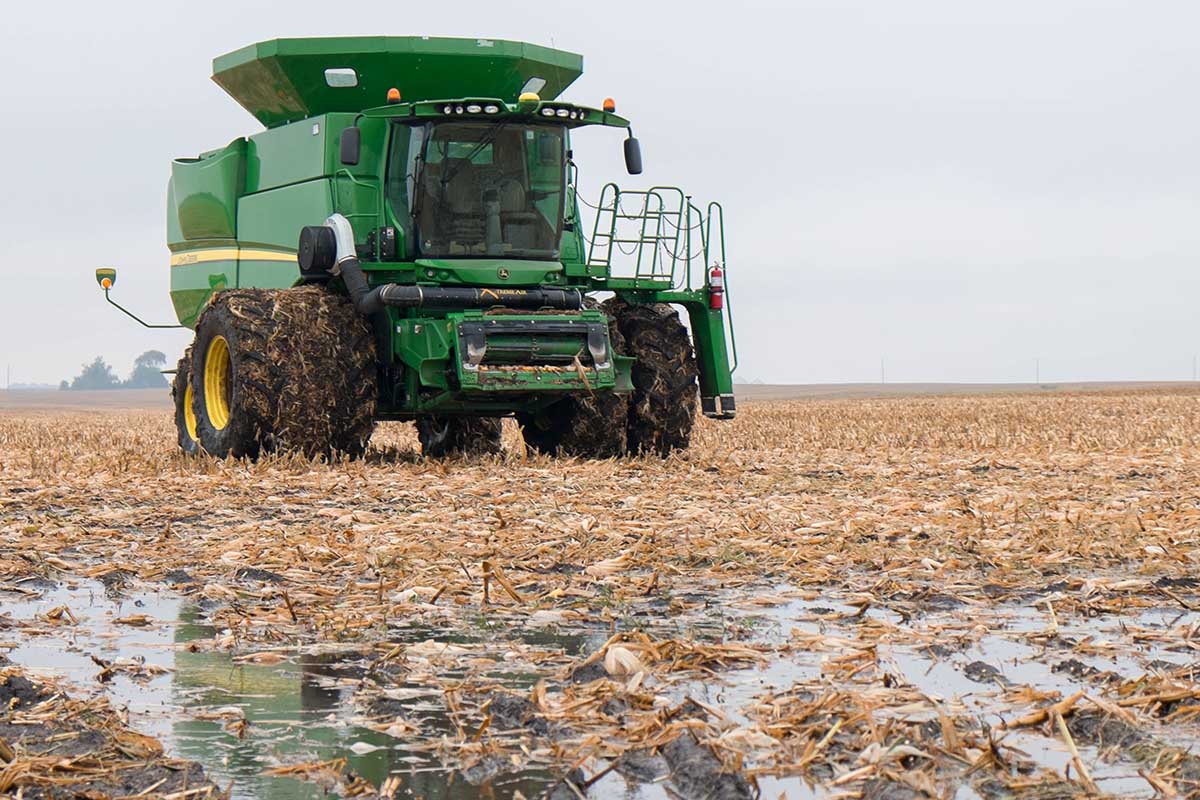
(Photo: Iowa Soybean Association / File Photo)
Rain halts post-harvest activities
November 21, 2024 | Kriss Nelson
Over the past month, widespread rain throughout the state has relieved extremely dry soils.
Dennis Todey, director of the USDA Midwest Climate Hub in Ames, says much of the state received nearly 6 inches of rainfall during that period, which helped to re-fill a soil profile that had almost become completely dry in some areas.
With potentially more precipitation coming, this is likely the end of the 2024 season.
Todey says the weather models hint at some activity next week, but there’s not much clarity yet. The eight to 14-day outlook, however, is showing to be a bit more active.
“There are hints we could get some more precipitation, and we have turned cold enough that it could occur as snow,” he says.
District 1 director Paul Kassel has had nearly four inches of rain on his farm near Spencer in Clay County in the last three weeks.
“Conditions have really changed. I have some fall fieldwork I would like to do, but I don’t think it will get done. Sounds like the ground might freeze before it dries out,” he says, adding that work will be a focus in the spring.
Dave Struthers, ISA District 5 director and farmer from Collins in Story County, says they were fortunate to complete some of their post-harvest work, but there is a lot left to do.
“We were able to get our manure pits emptied and got our 1,600 cornstalk bales brought in before the rain started,” says Struthers. “I have three hoop barns that need to be cleaned out, but I will have to wait until the ground freezes.”
Struthers’ family operates a custom anhydrous business, but they are not giving up on fall 2024 despite only being allowed less than two days.
“We are still hoping to get some on,” he says. “If not, farmers will use the anhydrous in the spring, unfortunately, it will cost more.”
What to consider for spring anhydrous applications
Alex Schaffer, ISA research agronomist, says there are pros and cons to a spring anhydrous application.
“Hands down, the biggest benefit of a fall application of anhydrous ammonia is logistics,” he says. “There is just no way of knowing when and for how long the window for application will be open, and that can be very stressful.”
The other significant benefit is price.
“We all know that as the planting season nears, demand for NH3 will increase, causing the price to go up as well,” he says.
Farmers will have to consider corn seed and seedling safety for a spring-applied anhydrous application.
“It is important to isolate the corn seed from the ammonia band with time and distance,” says Schaffer. “Anhydrous ammonia must be applied as far ahead of planting time as field conditions allow.”
Schaffer advises applying an anhydrous ammonia band 6 to 8 inches deep and applied at an angle with the crop row.
“This will ensure no large area of crop row is negatively impacted by an anhydrous ammonia application close to planting time,” he says.
Agronomically speaking, there are a lot of benefits to applying anhydrous ammonia in the spring.
“There is less time for the ammonium to be converted into highly leachable nitrate, and there is also better timing with the corn crop’s demand for nitrogen,” says Schaffer. “The less time nitrogen fertilizer has to sit in fallow ground waiting for plant uptake, the less fertilizer will be lost to the environment and more will remain available to the corn crop.”
Schaffer advises getting an application of anhydrous on when conditions improve, but leaving as much for a side-dress application as your operation can handle.
“This approach contributes to corn seed and seedling safety, increases nitrogen use efficiency, and helps achieve the 4Rs of nutrient management stewardship by focusing on the right source, the right rate, the right place and the right time, which includes a side-dress application of nitrogen fertilizer,” he says.
Weather outlook
Temperatures are expected to start turning colder, even much cooler than average for this time of year.
“Not only am I pleased with the recent rains from a soil moisture standpoint, but also it may help limit some frost depths,” says Todey. “Dry soils would have allowed for some very deep frost depths, which is less of a concern now.”
La Nina is expected to occur this winter, and although Todey thinks it may be a weaker weather pattern, it could give Iowans a winter they have not had in a few years.
“I am leaning toward it not being as warm this winter and seems more likely to be more active precipitation, whether snowfall or rainfall. We will have to watch how these storm systems develop,” he says.
Back